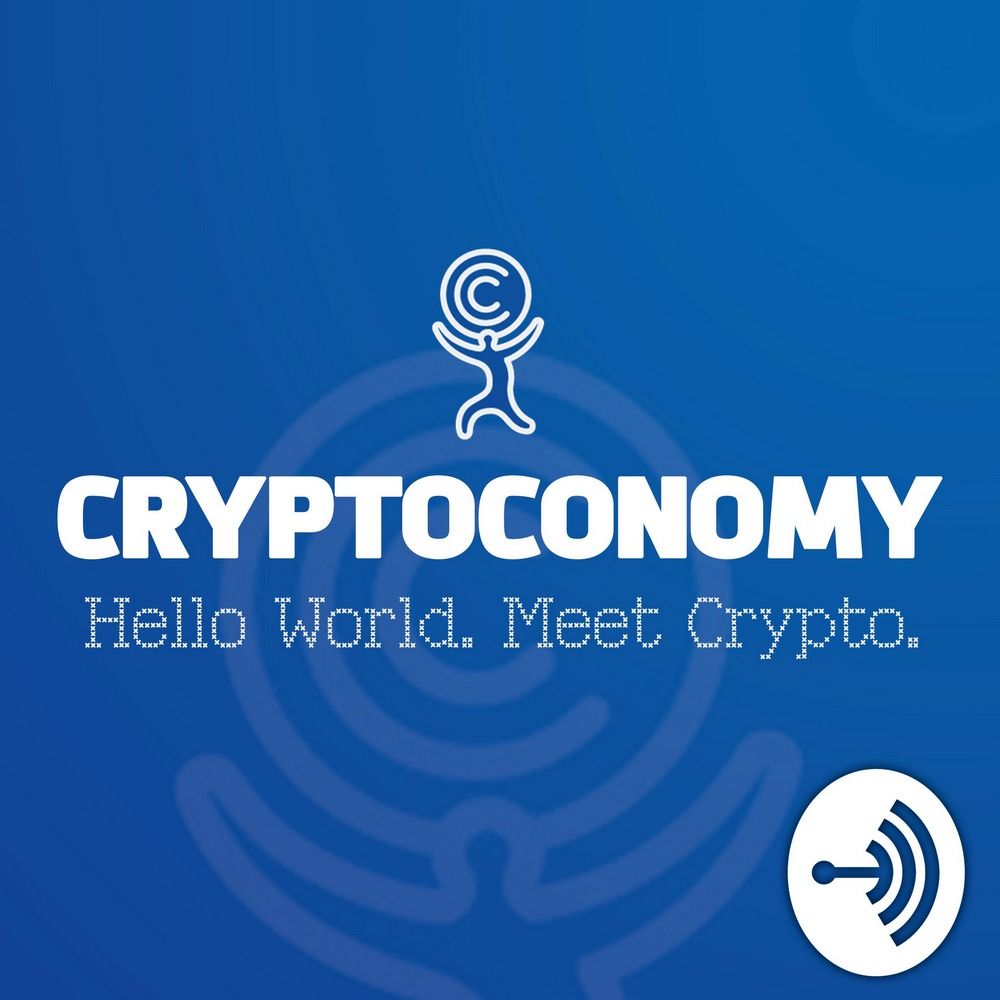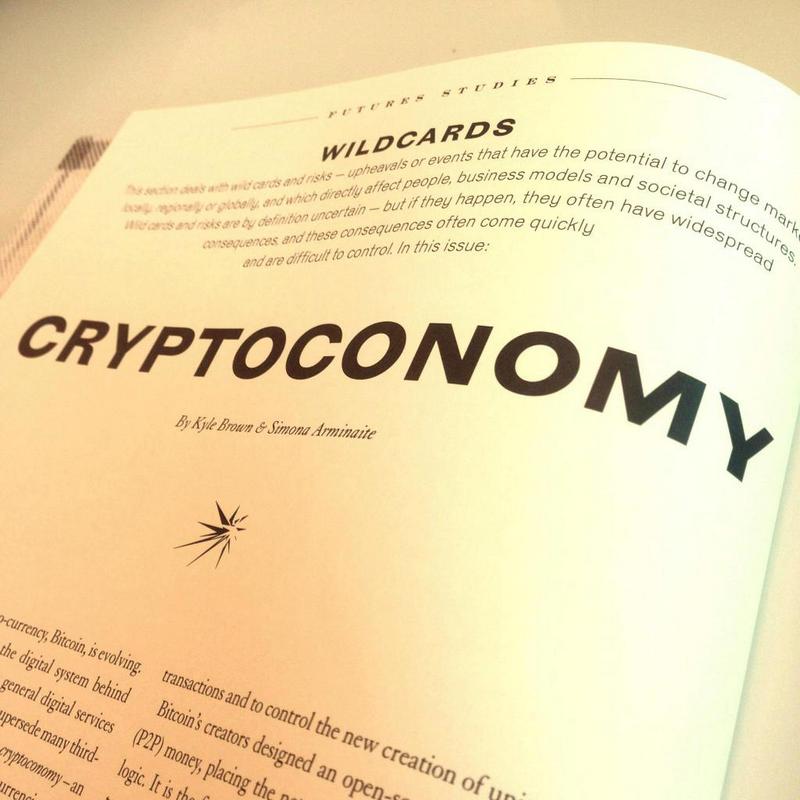How Cryptoconomy Will Be Created

Valley Voices Contributor - Voices on technology and change.
FORBES - Post written by William Mougayar
William Mougayar is an entrepreneur and investor who held senior positions at H-P and Cognizant. He is the founder of Startup Management.
What Bitcoin started is metamorphosing into something bigger: a “crypto-tech” driven economy with its own value creation, not unlike the Web’s own economy. Welcome to the cryptoconomy.
Contrary to what appears today, this cryptoconomy will not be born by attempting to take over the current financial services system, nor by waiting for consumers to transfer fiat money into cryptocurrency wallets; rather it will emerge by creating its own wealth, via new types of services and businesses that extend beyond money transactions.
The cryptoconomy is a serious event. It is the next phase of the Internet’s evolution - the decentralization era. Its genesis is Bitcoin’s backbone technology: the “blockchain”, a new term with applicability outside of just Bitcoin. The blockchain is like a new type of database ledger whose data is stored via a cryptographically secured, semi-public, semi-private way. That kind of openness ushers a path for point-to-point value exchanges, without trusted intermediaries or central parties.
A cryptocurrency is the perfect digital money. But money is only a form of value. The blockchain is a perfect exchange platform for digital value, and it can ride on the Internet, the largest connected network on the planet. The resulting combustion is digital value that can move fast, freely, efficiently, and cheaply. Therefore, the blockchain is a new "value exchange" network.
What if the blockchain could move any digital asset? What if you could take any legally binding construct like identity, ownership, contracts, or rights, and attach it in a unique, unforgeable, and auditable way to the blockchain's cryptographically secured ledger; then you open the path to millions of usage scenarios that gain wings by being tied on the blockchain. What if organizations based their operations, culture and values on what the blockchain enables?
In 1995, the Internet took off as soon as we started to program it with “Web applications”, and it is the same path that the crypto-tech revolution is on.
If Bitcoin (or any cryptocurrency) is programmable money, the blockchain is also programmable value, programmable governance, programmable contracts, programmable ownership, programmable trust, programmable rights, programmable assets, and more.
So, how do we create new value? You create value by running services on the blockchain. Buckminster Fuller would be happy today. He once said: “You never change things by fighting the existing reality. To change something, build a new model that makes the existing model obsolete.”
That is exactly what is happening. Bitcoin and cryptocurrencies will succeed, but not by mounting frontal attacks on the current financial system, nor by seeking permissions from regulators and gatekeepers. Rather, change will start to happen by creating a parallel system that will get stronger on its own, over time, and will eventually dwarf the current capitalization we see from the transfer of fiat money into cryptocurrency wallets.
With the Internet, we had e-commerce, e-business, e-services, e-markets, and later the social web arrived with large scale social networks. Each one of these segments created its own wealth by being on the Internet.
In the cryptospace, we will see a number of emerging businesses that will run on the blockchains, and they will generate a new source of wealth:
1) Services where a trust component can be stored on the blockchain. Since the blockchain acts as a verifiable and auditable place where transactions are really difficult to get tampered with, we could bind digital assets to the blockchain, in essence finger-printing ownership (or rights) in irrevocable ways without the need for a central registration authority. Expect the following foundations to be disrupted: identity, rights, membership, ownership, voting, data ownership, time stamping, attribution.
2) Services where a contractual component can be executed on the blockchain. Also known as “smart contracts”, a term first popularized by Nick Szabo, these are small programs that can run on a blockchain and self-govern legal or contractual terms between various parties, without the need for intermediaries. They represent a simple form of decentralized trust. Why depend on a central authority when two (or more) parties can agree between themselves, and bake the terms, compliance and implications of their agreement programmatically? Applications areas being targeted include: wagers, family trusts, escrow, time stamping, proofs of work delivery, bounties, proof of bets, proof of compliance.
3) Decentralized peer-to-peer marketplaces. These represent an evolution from what we see today in the most successful marketplaces (i.e. UBER, eBay, Amazon), but they actually threaten to replace some of these existing players. In a decentralized peer-to-peer marketplace, anyone can sell and anyone can buy, while the center controls less, but facilitates more. The blockchain acts as the trusted virtual intermediary that checks rules, identity, reputation, payment choices. Examples of marketplaces and services to support them are being concocted by startups, and I’ve depicted their characteristics and behaviors in Decentralized P2P Marketplaces.
4) Distributed Autonomous Organizations (DAO) whose governance and operations run on the blockchain. Arguably, this is the epitome of business decentralization. A DAO issues its own cryptocurrency, a process called “cryptoequity”. Each member is also a “worker”, and by virtue of their collective actions and activity levels, they contribute to increasing value for the DAO. Some examples of user actions could include sharing their computing power or Internet access (e.g. to create mesh networks), donating data they own, delivering on bounties, or other value-adding action that is specific to the segment being targeted.
The above four sectors represent “decentralized applications”, an emerging sector in web software development. What they have in common is that they run on a blockchain, can multiply and grow without central control, and they are fueled by cryptocurrency to support the transactions and computing power they run on. The cryptocurrency is like fuel; it’s collected in part as toll, in part as earnout by the participating users and those that provide these services. So you can start to see how cryptocurrency can be generated out of crypto-services to instigate a new economy of wealth creation.

Once that happens, there will be a critical mass of users with significant cryptocurrency balances in their accounts. Only then, can we attempt to potentially make dents into the current financial system, and in the nation-currency sovereign government paradigm. The reality is that it’s very likely that the financial systems and governments will be the last bastions to be affected, and not the first ones.
As we prepare to enter the cryptoconomy, undoubtedly it looks fuzzy, foggy, risky, buggy, uncertain and unproven, but so did the Internet in 1995. Then suddenly, it blossomed and grew into our lives, businesses, and it infiltrated society and culture, with more benefits than vices.
The blockchain symbolizes a shift in power from the centers to the edges of the networks. It is a vision that we have romanced since the early days of the Internet, but it can actually happen this time, because it is powered by an intrinsic monetary value, the Internet’s own native cryptocurrency.
Existing intermediaries will be at risk. And the new intermediaries will be more virtual, transparent, and distributed entities that are trusted programmatically. This cryptoconomy is decentralized at birth,- politically and architecturally; and it lends equal access and lower barriers of entry to all. Anyone on the planet will be able to “work” for a DAO without permission, and therefore will generate their own wealth.
This cryptoconomy will transfigure businesses, government and our society, perhaps even more profoundly than the Internet did, 20 years ago. This cryptoconomy is the newest phase of the Internet, and it will unravel and blossom over the next 10 years. Fast forward 10 years, maybe we will have forgotten Bitcoin, but we will be left with decentralization and cryptocurrencies. The bridge to get us there is the blockchain.
William Mougayar is a 4x entrepreneur, venture advisor and angel investor who previously held senior positions at Hewlett-Packard and Cognizant. He is the founder of Startup Management where he blogs and curates on startups and the cryptocurrency economy.
©2019 Forbes Media LLC. All Rights Reserved.
WHO and WHAT is behind it all ? : >
The bottom line is for the people to regain their original, moral principles, which have intentionally been watered out over the past generations by our press, TV, and other media owned by the Illuminati/Bilderberger Group, corrupting our morals by making misbehavior acceptable to our society. Only in this way shall we conquer this oncoming wave of evil.
Commentary:
Administrator
All articles contained in Human-Synthesis are freely available and collected from the Internet. The interpretation of the contents is left to the readers and do not necessarily represent the views of the Administrator. Disclaimer: The contents of this article are of sole responsibility of the author(s). Human-Synthesis will not be responsible for any inaccurate or incorrect statement in this article. Human-Synthesis grants permission to cross-post original Human-Synthesis articles on community internet sites as long as the text & title are not modified.
The source and the author's copyright must be displayed. For publication of Human-Synthesis articles in print or other forms including commercial internet sites. Human-Synthesis contains copyrighted material the use of which has not always been specifically authorized by the copyright owner. We are making such material available to our readers under the provisions of "fair use" in an effort to advance a better understanding of political, economic and social issues. The material on this site is distributed without profit to those who have expressed a prior interest in receiving it for research and educational purposes. If you wish to use copyrighted material for purposes other than "fair use" you must request permission from the copyright owner.